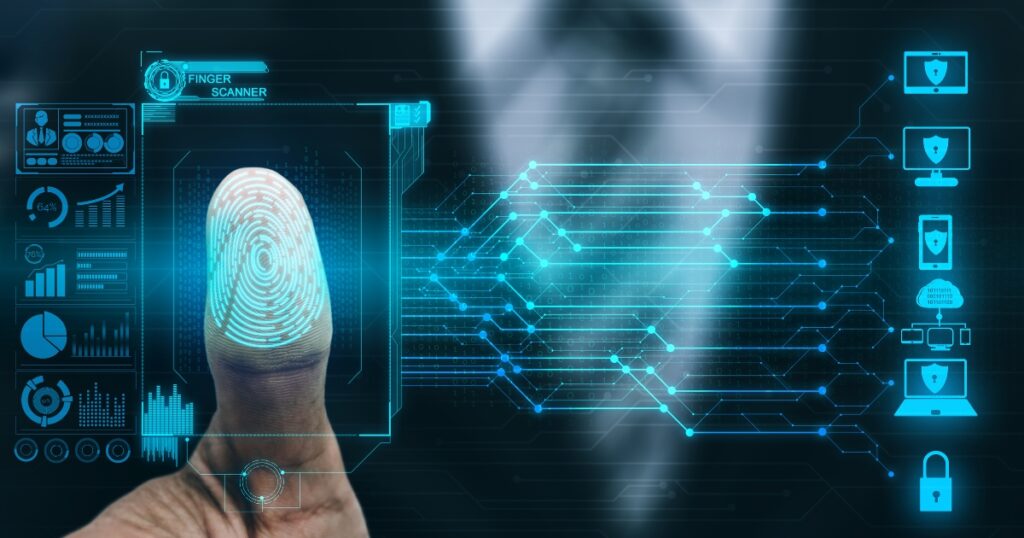Technology is evolving day by day, which is making it essential to prioritize the online security of individuals as well as organizations. You must have heard how cyber crimes are increasing day by day and affecting confidential data and information. Digital fingerprinting is a doorway to a more clear and secure future. This technology is fundamentally transforming how people approach online security.
The traditional security measures like two-step authentication, encryption, and passwords are no longer enough to protect sensitive information. So, the use of technology in fingerprinting deals with collecting and analyzing diverse data points from the user’s device to the browser. Scroll down to this blog and gather knowledge about how digital fingerprinting has been evolving and transforming online security.
5 Major Roles of Digital Fingerprinting in Online Security Transformation
Fingerprinting is one of the most essential and unique proofs that plays a crucial role in criminal investigations and conforms to a person’s identity, etc. Different types of notary services also get authentication with the help of fingerprinting services. However, the use of digital fingerprinting is one of the most secure methods of preserving personal identity.
The major role of fingerprinting in transforming online security is given below:
1. Combating Account Takeovers
Account takeovers are one of the most common types of cyberattacks that impact confidential data and information of an individual. Digital fingerprints play a crucial role in mitigating this threat by identifying anomalous logins based on the user’s unique fingerprint. Digital fingerprinting helps prevent unauthorized access by continuously monitoring for unusual fingerprint changes. Even if the attacker knows the correct username and password, there is no use of that because of the effective security provided by digital fingerprinting.
2. Enhancing Fraud Prevention
Everyone in this world has unique fingerprints that do not match and remain the same from birth till death. Copying someone’s fingerprint is the only way to get their authentication. But digital fingerprinting plays an essential role in fraud detection and prevention. The system can block as soon as new fingerprints appear to make transactions. This helps to prevent fraudulent transactions before they occur, minimizing financial losses and damages to the business.
3. Reducing the Reliance on Passwords
Nowadays, we all rely on passwords to keep our digital profiles safe and secure. However, it can also be hacked and confidential data and information can be cracked. Many users reuse passwords across multiple accounts to remember them when required.
Digital fingerprinting provides an extra layer of security that reduces reliance on passwords alone. This is because it combines with other authentication methods that help confirm a user’s identity based on their unique device characteristics. This is the reason you will find that the banking sector has increasingly used fingerprints as biometric information.
4. Detecting Fraudulent Activity in Real-Time
One of the most effective and key benefits of digitalized fingerprints is its ability to operate in real-time. This factor helps with fraud detection and risk mitigation that are critical for online businesses and services. Digital fingerprinting also reduces the risk associated with security breaches. The transactions can be flagged or reviewed on the spot that detects fraudulent transactions.
5. Enhancing Compliance with Privacy Regulations
A digital fingerprint not only helps in protecting individual data and information but also provides security to businesses. Privacy regulations in the current generation, like the General Data Protection Regulation and the California Consumer Privacy Act, are becoming essential. Therefore, digital fingerprinting has been helping businesses comply with the rules while securing confidential data and information. So, privacy regulations are well maintained over time.
Conclusion
Digital fingerprinting is also less intrusive than traditional tracking methods such as cookies because it does not collect sensitive data. Whether it is an organization or an individual, both can maintain a strong and high level of security.
We should remain grateful towards evolving technology for which we can take advantage of security deploying a digital fingerprinting service. Most of the time, challenges are associated with privacy and potential abuse of confidential data. Therefore, digital fingerprinting can be taken as one of the key elements that safeguards personal data.


